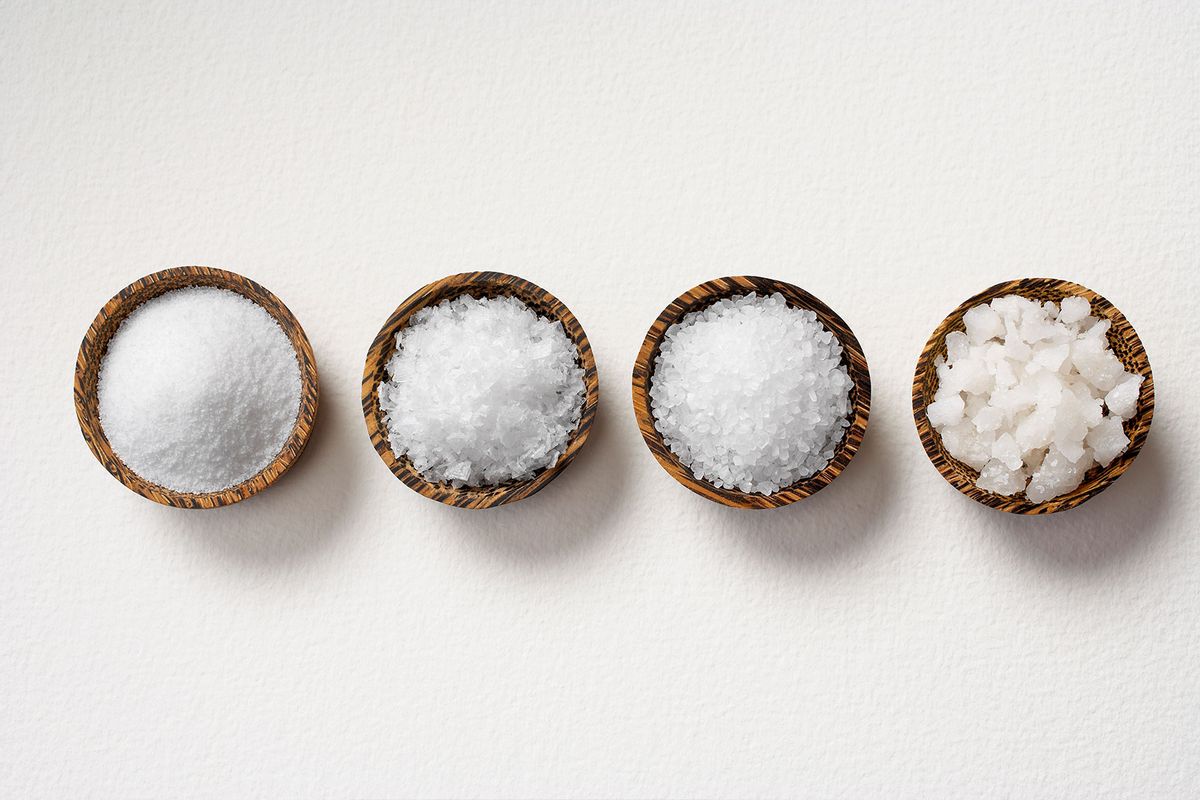Salmiak, a Scandinavian salt licorice, is definitely an acquired taste. Sometimes the confection is a little sweet, but often it’s this unique (if slightly addictive) combination of bitterness and salinity, a flavor profile so distinct that it helped inform a major scientific discovery.
For decades, the scientific and culinary communities have recognized five basic tastes: salty, sweet, sour, bitter and umami. However, researchers from the University of Southern California Dornsife College of Letters, Arts and Scientists believe that there may be one more called ammonium chloride, also called salmiak salt, which happens to be the ingredient that gives salmiak its signature salted pucker. “If you live in a Scandinavian country, you will be familiar with and may like this taste,” USC Dornsife neuroscientist Emily Liman said in a release.
Liman and her team of researchers published their findings earlier this month in the journal “Nature Communications.” They wrote in the introduction to the study that ammonium — and its gas, ammonia — are generally noxious to humans and other animals. High tissue concentrations of ammonium found in conditions, such as hyperammonemia, can be life-threatening.
“Thus, it is not surprising that animals from the nematode C. elegans to fruit flies and humans have evolved multiple mechanisms to detect ammonium/ammonia,” they wrote. “Ammonium has a unique and strong taste, described as a combination of bitter, salty, and a little sour.”
For decades scientists have known that the tongue responds strongly to ammonium chloride, but weren’t sure which receptors were responsible for being able to do so. Liman and her team, which includes scientists from the University of Colorado Medical School, theorized that the same protein that detects sour tastes, OTOP1, might respond to ammonium chloride, too.
According to a release from the university, the researchers tested this hypothesis by introducing the OTOP1 gene into lab-grown human cells. Some of these cells were then exposed to acid and ammonium chloride and “the results showed that ammonium chloride activated the OTOP1 receptor just as effectively as acid.”
"If you live in a Scandinavian country, you will be familiar with and may like this taste."
“Further tests on mice confirmed that those with the OTOP1 gene avoided ammonium chloride, while those without it didn’t mind the taste,” the release continued.
As this finding would indicate, many animals, including humans, find the taste of ammonium chloride to be aversive — but as the popularity of salmiak would indicate, that’s not universally the case.
“While no one knows what twisted soul was the first to add NH4CL, ammonium chloride, to licorice root extract and sugar, some suspect old-time pharmacies used the salty compound for housemade cough syrups, as it is powerful enough to clear your sinuses,” wrote Andrew Richdale for “Saveur.” “By the 1930s, licorice bits loaded with the expectorant had blown up across and beyond the Nordic region, including Holland, the world's largest consumer of the treat. The tang of salmiak is so popular in the region today, it's used to flavor pastries, tobacco packets, and even meat dishes.”
So, what will it take for the scientific community at large to sign on to the idea of another basic taste? If it’s anything like umami’s ascension to the group, the answer may simply be time.
In the early 1900s, a chemist named Dr. Kikunae Ikeda of Tokyo Imperial University observed there was a quality in Dashi — a clear, savory stock made from kombu and dried bonito flakes — that was distinct from the other four basic tastes: sweet, salty, bitter and sour. Ikeda said that the flavor is “usually so faint and overshadowed by other stronger tastes that it is often difficult to recognize it unless attention is specifically directed towards it,” however it could not be produced by any combination of the other four basic tastes.
We need your help to stay independent
Eventually, Ikeda found that the taste, which he called “umami,” was made of glutamate, an amino acid that is one of the building blocks of protein. With his newfound knowledge, Ikeda went on to found the company Ajinomoto and started mass producing the food additive monosodium glutamate or MSG. However, the broader scientific community didn’t begin to recognize umami as a discernible taste until the mid-1980s, nearly eight decades after Ikeda’s original findings.
Through the years, other research teams have advocated for yet other tastes to be added to the Big Four (now the Big Five with the addition of umami). In 2016, Juyun Lim at Oregon State University in Corvallis posited that humans could taste the “starchiness” associated with carbohydrate-rich foods. “Asians would say it was rice-like, while Caucasians described it as bread-like or pasta-like. It’s like eating flour,” she told The New Scientist.
A year prior, a paper published in the journal “Chemical Senses” argued that we were missing another basic taste called oleogustus, or the unique taste of fat. One of the study authors, Richard D. Mattes, told TIME that while there is no single definition of what makes something a basic taste, for it to be recognized by other scientists, it really needs to meet several categories. According to him, “the stimulus should have a unique structure, it should bind or interact with a unique receptor, it should be carried by the taste nerves to the central nervous system where taste information is decoded, and it should have a particular function.”
For now, the scientists behind the ammonium chloride study plan to explore the OTOP1 receptor’s response to ammonium chloride, hoping to uncover more about its evolutionary significance.
Read more
from Salon Food

Shares